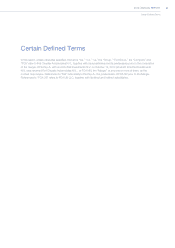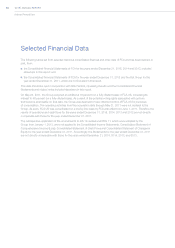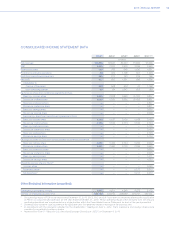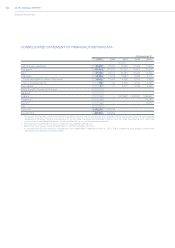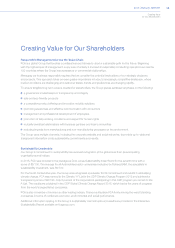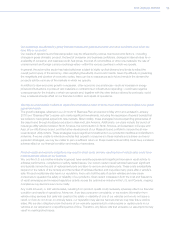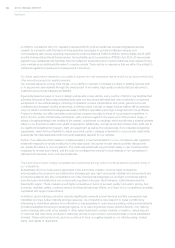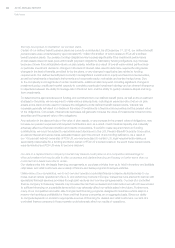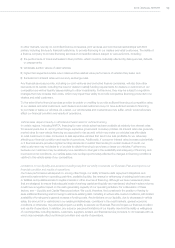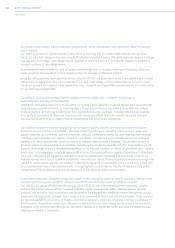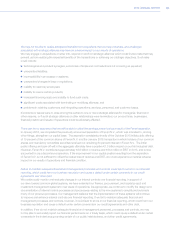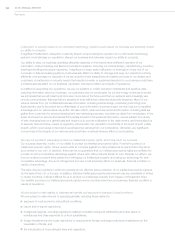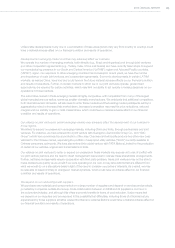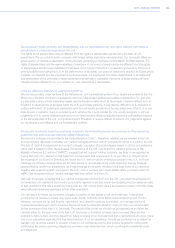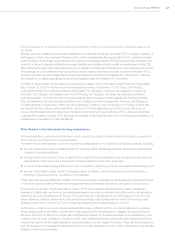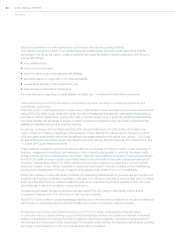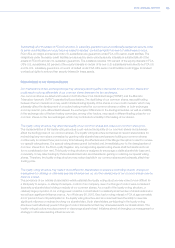Chrysler 2015 Annual Report Download - page 19
Download and view the complete annual report
Please find page 19 of the 2015 Chrysler annual report below. You can navigate through the pages in the report by either clicking on the pages listed below, or by using the keyword search tool below to find specific information within the annual report.
2015 | ANNUAL REPORT 19
In other markets, we rely on controlled finance companies, joint ventures and commercial relationships with third
parties, including third party financial institutions, to provide financing to our dealers and retail customers. The ability of
a finance company to provide financing services at competitive rates is subject to various factors, including:
the performance of loans and leases in their portfolio, which could be materially affected by delinquencies, defaults
or prepayments;
wholesale auction values of used vehicles;
higher than expected vehicle return rates and the residual value performance of vehicles they lease; and
fluctuations in interest rates and currency exchange rates.
Any financial services provider, including our joint ventures and controlled finance companies, will also face other
demands on its capital, including the need or desire to satisfy funding requirements for dealers or customers of our
competitors as well as liquidity issues relating to other investments. Furthermore, they may be subject to regulatory
changes that may increase their costs, which may impair their ability to provide competitive financing products to our
dealers and retail customers.
To the extent that a financial services provider is unable or unwilling to provide sufficient financing at competitive rates
to our dealers and retail customers, such dealers and retail customers may not have sufficient access to financing
to purchase or lease our vehicles. As a result, our vehicle sales and market share may suffer, which would adversely
affect our financial condition and results of operations.
Vehicle sales depend heavily on affordable interest rates for vehicle financing.
In certain regions, including NAFTA, financing for new vehicle sales has been available at relatively low interest rates
for several years due to, among other things, expansive government monetary policies. As interest rates rise generally,
market rates for new vehicle financing are expected to rise as well, which may make our vehicles less affordable
to retail customers or steer consumers to less expensive vehicles that tend to be less profitable for us, adversely
affecting our financial condition and results of operations. Additionally, if consumer interest rates increase substantially
or if financial service providers tighten lending standards or restrict their lending to certain classes of credit, our
retail customers may not desire to or be able to obtain financing to purchase or lease our vehicles. Furthermore,
because our customers may be relatively more sensitive to changes in the availability and adequacy of financing and
macroeconomic conditions, our vehicle sales may be disproportionately affected by changes in financing conditions
relative to the vehicle sales of our competitors.
Limitations on our liquidity and access to funding may limit our ability to execute our Business Plan and improve our
financial condition and results of operations.
Our future performance will depend on, among other things, our ability to finance debt repayment obligations and
planned investments from operating cash flow, available liquidity, the renewal or refinancing of existing bank loans and/
or facilities and possible access to capital markets or other sources of financing. Although we have measures in place
that are designed to ensure that adequate levels of working capital and liquidity are maintained, declines in sales volumes
could have a negative impact on the cash-generating capacity of our operating activities. For a discussion of these
factors, see —Liquidity and Capital Resources below. We could, therefore, find ourselves in the position of having to
seek additional financing and/or having to refinance existing debt, including in unfavorable market conditions, with limited
availability of funding and a general increase in funding costs. Any limitations on our liquidity, due to decreases in vehicle
sales, the amount of or restrictions in our existing indebtedness, conditions in the credit markets, general economic
conditions or otherwise, may adversely impact our ability to execute our Business Plan and impair our financial condition
and results of operations. In addition, any actual or perceived limitations of our liquidity may limit the ability or willingness
of counterparties, including dealers, customers, suppliers, lenders and financial service providers, to do business with us,
which may adversely affect our financial condition and results of operations.


